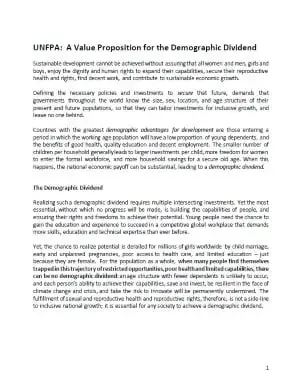Sustainable development cannot be achieved without assuring that all women and men, girls and boys, enjoy the dignity and human rights to expand their capabilities, secure their reproductive health and rights, find decent work, and contribute to sustainable economic growth.
Defining the necessary policies and investments to secure that future, demands that governments throughout the world know the size, sex, location, and age structure of their present and future populations, so that they can tailor investments for inclusive growth, and leave no one behind.
Countries with the greatest demographic advantages for development are those entering a period in which the working age population will have a low proportion of young dependents, and the benefits of good health, quality education and decent employment. The smaller number of children per household generally leads to larger investments per child, more freedom for women to enter the formal workforce, and more household savings for a secure old age. When this happens, the national economic payoff can be substantial, leading to a demographic dividend.
Realizing such a demographic dividend requires multiple intersecting investments. Yet the most essential, without which no progress will be made, is building the capabilities of people, and ensuring their rights and freedoms to achieve their potential. Young people need the chance to gain the education and experience to succeed in a competitive global workplace that demands more skills, education and technical expertise than ever before.
Sexual & reproductive health
Human rights & gender equality
Population matters
Who we are

Publisher
UNFPA
Number of pages
6
Author
UNFPA
Publications
UNFPA: A Value Proposition for the Demographic Dividend
Publication date
02 December 2015

